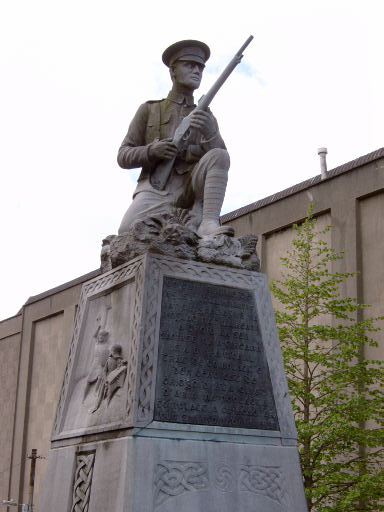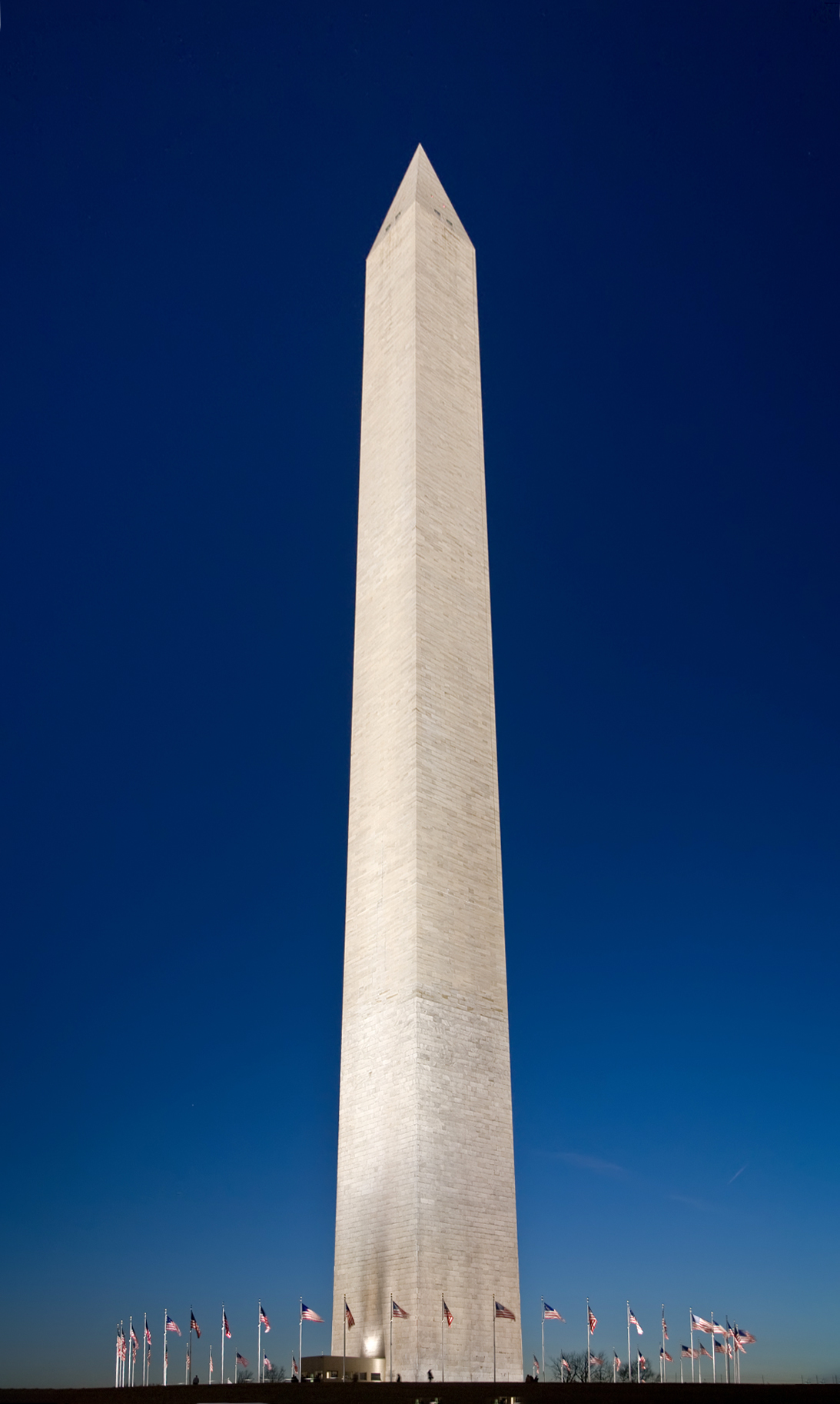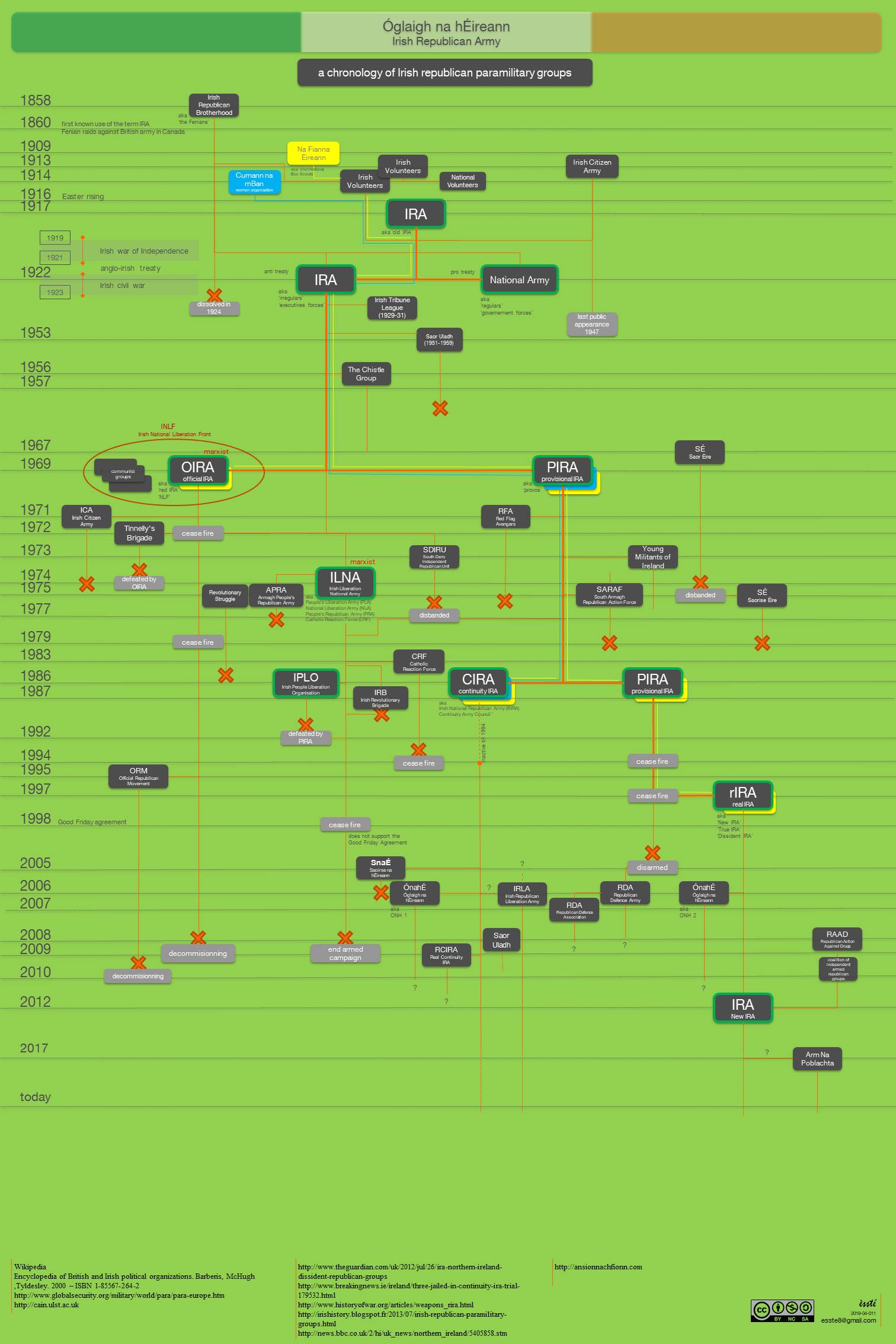|
Seán O'Duffy
Seán O'Duffy (; 1886 – 20 October 1981) was an Irish sports administrator. For 40 years, he was heavily involved in the development of camogie in Ireland; coordinating it on a national level. O'Duffy's contributions to camogie have been widely respected and the title "Mr. Camogie," is often associated with him.Seocháin, O.S. (1981, 30 October). Sean O’Duffy: An Apperciation. The Irish Times, pp.4. Early life O'Duffy was born in the year 1886, in Cill an Bhaile (Killawalla), County Mayo, Ireland; a town not far from Westport. He lived there until the age of 14, arriving in Dublin during the year 1900. During his time in Dublin, O'Duffy resided in Kenilworth Park, Harold's Cross, an inner suburb located in the south of Dublin. Throughout his life, O'Duffy had a strong interest in Camoige, but was also involved in political activities, taking part in the Dublin lock-out in 1913; a strike led by Jim Larkin, who was said to be O'Duffy's "hero" in his early life. In the year 19 ... [...More Info...] [...Related Items...] OR: [Wikipedia] [Google] [Baidu] |
Camogie Association
The Camogie Association (, formerly ) organises and promotes the sport of camogie in Ireland and around the world. The association has close ties with the Gaelic Athletic Association, but is still a separate organisation. History The Camogie Association was founded in 8 North Frederick St, Dublin on 25 February 1904, with Máire Ní Chinnéide as president. In 1911, it was reconstituted as Cualacht Luithchleas na mBan Gaedheal ("Gaelic Athletic Company of Women") at a meeting organised by Seaghán Ua Dúbhtaigh at 25 Rutland Square (now Parnell Square), Dublin. It was revived in 1923 and the first congress held on 25 April 1925, when over 100 delegates gathered in Conarchy's Hotel, Parnell Square. It was reconstituted again in 1939 as Cumann Camogaiochta na nGael. For a period in the 1930s it organised women's athletics events. A breakaway Cualacht Luithchleas na mBan Gaedheal continued in existence during 1939–51 as clubs in Cork, Dublin, Kildare, Meath and Wicklow disaffil ... [...More Info...] [...Related Items...] OR: [Wikipedia] [Google] [Baidu] |
Irish Volunteers
The Irish Volunteers (), also known as the Irish Volunteer Force or the Irish Volunteer Army, was a paramilitary organisation established in 1913 by nationalists and republicans in Ireland. It was ostensibly formed in response to the formation of its Irish unionist/loyalist counterpart the Ulster Volunteers in 1912, and its declared primary aim was "to secure and maintain the rights and liberties common to the whole people of Ireland". Its ranks included members of the '' Conradh na Gaeilge'', Ancient Order of Hibernians, Sinn Féin and the Irish Republican Brotherhood. Increasing rapidly to a strength of nearly 200,000 by mid-1914, it split in September of that year over John Redmond's support for the British war effort during World War I, with the smaller group opposed to Redmond's decision retaining the name "Irish Volunteers". Formation Background The Irish Home Rule movement dominated political debate in the British Isles since Prime Minister William Ewart Gladst ... [...More Info...] [...Related Items...] OR: [Wikipedia] [Google] [Baidu] |
1981 Deaths
Events January * January 1 ** Greece enters the European Economic Community, predecessor of the European Union. ** Palau becomes a self-governing territory. * January 6 – A funeral service is held in West Germany for Nazi Grand Admiral Karl Doenitz following his death on December 24. * January 10 – Salvadoran Civil War: The FMLN launches its first major offensive, gaining control of most of Morazán and Chalatenango departments. * January 15 – Pope John Paul II receives a delegation led by Polish Solidarity leader Lech Wałęsa at the Vatican. * January 20 – Iran releases the 52 Americans held for 444 days, minutes after Ronald Reagan is sworn in as the 40th President of the United States, ending the Iran hostage crisis. * January 21 – The first DeLorean automobile, a stainless steel sports car with gull-wing doors, rolls off the production line in Dunmurry, Northern Ireland. * January 24 – An earthquake of magnitude in Sichuan, China, kills 150 people. J ... [...More Info...] [...Related Items...] OR: [Wikipedia] [Google] [Baidu] |
1885 Births
Events January * January 3– 4 – Sino-French War – Battle of Núi Bop: French troops under General Oscar de Négrier defeat a numerically superior Qing Chinese force, in northern Vietnam. * January 17 – Mahdist War in Sudan – Battle of Abu Klea: British troops defeat Mahdist forces. * January 20 – American inventor LaMarcus Adna Thompson patents a roller coaster. * January 24 – Irish rebels damage Westminster Hall and the Tower of London with dynamite. * January 26 – Mahdist War in Sudan: Troops loyal to Mahdi Muhammad Ahmad conquer Khartoum; British commander Charles George Gordon is killed. February * February 5 – King Leopold II of Belgium establishes the Congo Free State, as a personal possession. * February 9 – The first Japanese arrive in Hawaii. * February 16 – Charles Dow publishes the first edition of the Dow Jones Industrial Average. The index stands at a level of 62.76, and r ... [...More Info...] [...Related Items...] OR: [Wikipedia] [Google] [Baidu] |
Glasnevin Cemetery
Glasnevin Cemetery () is a large cemetery in Glasnevin, Dublin, Ireland which opened in 1832. It holds the graves and memorials of several notable figures, and has a museum. Location The cemetery is located in Glasnevin, Dublin, in two parts. The main part, with its trademark high walls and watchtowers, is located on one side of the road from Finglas to the city centre, while the other part, "St. Paul's," is located across the road and beyond a green space, between two railway lines. A gateway into the National Botanic Gardens (Ireland), National Botanic Gardens, adjacent to the cemetery, was reopened in recent years. History and description Prior to the establishment of Glasnevin Cemetery, Irish Catholics had no cemeteries of their own in which to bury their dead and, as the repressive Penal Laws against Irish Catholics, Penal Laws of the eighteenth century placed heavy restrictions on the public performance of Catholic services, it had become normal practice for Catholics ... [...More Info...] [...Related Items...] OR: [Wikipedia] [Google] [Baidu] |
Irish Civil Service
The Civil service () of the Republic of Ireland is the collective term for the permanent staff of the departments of state and certain state agencies who advise and work for the Government of Ireland. It consists of two broad components, the ''Civil service of the Government'' and the ''Civil service of the State''. Whilst the differences between these two components are largely theoretical, some fundamental operational distinctions exist. Development The civil service of the Irish Free State was not formally established by any specific legislation. The Anglo-Irish Treaty of 1921 did however provide that the Government of the Irish Free State became responsible for those who were discharged or retired from the civil or public services in the new state, except a few exempted personnel recruited in response of the Anglo-Irish War. The exact status and compensation of such people was further codified in law by thCivil Service (Transferred Officers) Compensation Act 1929 This had t ... [...More Info...] [...Related Items...] OR: [Wikipedia] [Google] [Baidu] |
Patrick Pearse
Patrick Henry Pearse (also known as Pádraig or Pádraic Pearse; ; 10 November 1879 – 3 May 1916) was an Irish teacher, barrister, Irish poetry, poet, writer, Irish nationalism, nationalist, Irish republicanism, republican political activist and revolutionary who was one of the leaders of the Easter Rising in 1916. Following his execution along with fifteen others, Pearse came to be seen by many as the embodiment of the rebellion. Early life and influences Pearse, his brother Willie Pearse, Willie, and his sisters Margaret Mary Pearse, Margaret and Mary Brigid were born at 27 Pearse Street, Great Brunswick Street, Dublin, the street that is named after them today. It was here that their father, James Pearse, established a stonemasonry business in the 1850s, a business which flourished and provided the Pearses with a comfortable middle-class upbringing. Pearse's father was a mason and monumental sculptor, and originally a Unitarianism, Unitarian from Birmingham in England. His ... [...More Info...] [...Related Items...] OR: [Wikipedia] [Google] [Baidu] |
Omeath
Omeath (; or ''Uí Meth'') is a village on the Cooley Peninsula in County Louth, Ireland, close to the border with Northern Ireland. It is roughly midway between Dublin and Belfast, very near the County Louth and County Armagh / County Down border. As of the 2016 census, Omeath had a population of 603, up from 439 during the 2006 census. It is approximately from Carlingford and about from Newry. By sea, Omeath's nearest land neighbour is Warrenpoint on the south County Down coast. Omeath is home to the Cúchulainn Gaels Gaelic Athletic Association club. Name It is named after ''Muireadheach Méith'' (''méith'' meaning 'the fat') and was originally called ''Uí Méith Mara'', by the sea, to distinguish it from another Ó Méith named after the same man. History Omeath was a village that sprung up around the old Omeath railway station in 1876. The town attracted day-trippers from around Northern Ireland and elsewhere, but unlike nearby Warrenpoint, Omeath never became ... [...More Info...] [...Related Items...] OR: [Wikipedia] [Google] [Baidu] |
All-Ireland Senior Camogie Championship
The All-Ireland Senior Camogie Championship is a competition for inter-county teams in the women's field sport of game of camogie played in Ireland. The series of games are organised by the Camogie Association and are played during the summer months with the All-Ireland Camogie Final being played in Croke Park, Dublin. The prize for the winning team is the O'Duffy Cup. The men's equivalent tournament is the All-Ireland Senior Hurling Championship. History Highlights and incidents Highlights and incidents through the history of the championship include: *The first final in which Dublin, captained by Association president Máire Gill and helped by two Bray players, beat Galway 3–2 to 0–2 at Galway Sportsfield in the summer of 1933, refereed by Stephen Jordan TD. *Six goals (of Cork's seven) scored by Kitty Buckley of Old Aloysius for Cork v Dublin n the 1941 final. *The 1942 final, broadcast on radio for the first time and the 1943 final between Dublin and Cork whi ... [...More Info...] [...Related Items...] OR: [Wikipedia] [Google] [Baidu] |
Gaelic Athletic Association
The Gaelic Athletic Association (GAA; ; CLG) is an Irish international amateur sports, amateur sporting and cultural organisation, focused primarily on promoting indigenous Gaelic games and pastimes, which include the traditional Irish sports of hurling, camogie, Gaelic football, Gaelic handball, and GAA rounders. The association also promotes Irish music and Irish dance, dance, as well as the Irish language and it also promotes environmental stewardship through its Green Clubs initiative. As of 2014, the organisation had over 500,000 members, and declared total revenues of €96.1 million in 2022. The Competitions Control Committee (CCC) of the Gaelic Athletic Association (GAA) governing bodies organise the fixture list of Gaelic games within a GAA county or provincial councils. Gaelic football and hurling are the most popular activities promoted by the organisation, and the most popular sports in the Republic of Ireland in terms of attendance. Gaelic football is also the seco ... [...More Info...] [...Related Items...] OR: [Wikipedia] [Google] [Baidu] |
Irish Republican Army
The Irish Republican Army (IRA) is a name used by various Resistance movement, resistance organisations in Ireland throughout the 20th and 21st centuries. Organisations by this name have been dominantly Catholic and dedicated to anti-imperialism through Irish republicanism, the belief that all of Ireland should be an independent republic free from British colonial rule. The original Irish Republican Army (1919–1922), often now referred to as the "old IRA", was raised in 1917 from members of the Irish Volunteers and the Irish Citizen Army later reinforced by Irishmen formerly in the British Army in World War I, who returned to Ireland to fight against Britain in the Irish War of Independence. In Irish law, this IRA was the army of the revolutionary republic, revolutionary Irish Republic as declared by its parliament, Dáil Éireann (Irish Republic), Dáil Éireann, in 1919. In the century that followed, the original IRA was reorganised, changed and split on multiple occasions ... [...More Info...] [...Related Items...] OR: [Wikipedia] [Google] [Baidu] |
Michael Collins (Irish Leader)
Michael Collins (; 16 October 1890 – 22 August 1922) was an Irish revolutionary, soldier and politician who was a leading figure in the early-20th century struggle for Irish independence. During the War of Independence he was Director of Intelligence of the Irish Republican Army (IRA) and a government minister of the self-declared Irish Republic. He was then Chairman of the Provisional Government of the Irish Free State from January 1922 and commander-in-chief of the National Army from July until his death in an ambush in August 1922, during the Civil War. Collins was born in Woodfield, County Cork, the youngest of eight children. He moved to London in 1906 to become a clerk in the Post Office Savings Bank at Blythe House. He was a member of the London GAA, through which he became associated with the Irish Republican Brotherhood and the Gaelic League. He returned to Ireland in January 1916 and fought in the Easter Rising. He was taken prisoner and held in the Frongoch ... [...More Info...] [...Related Items...] OR: [Wikipedia] [Google] [Baidu] |







